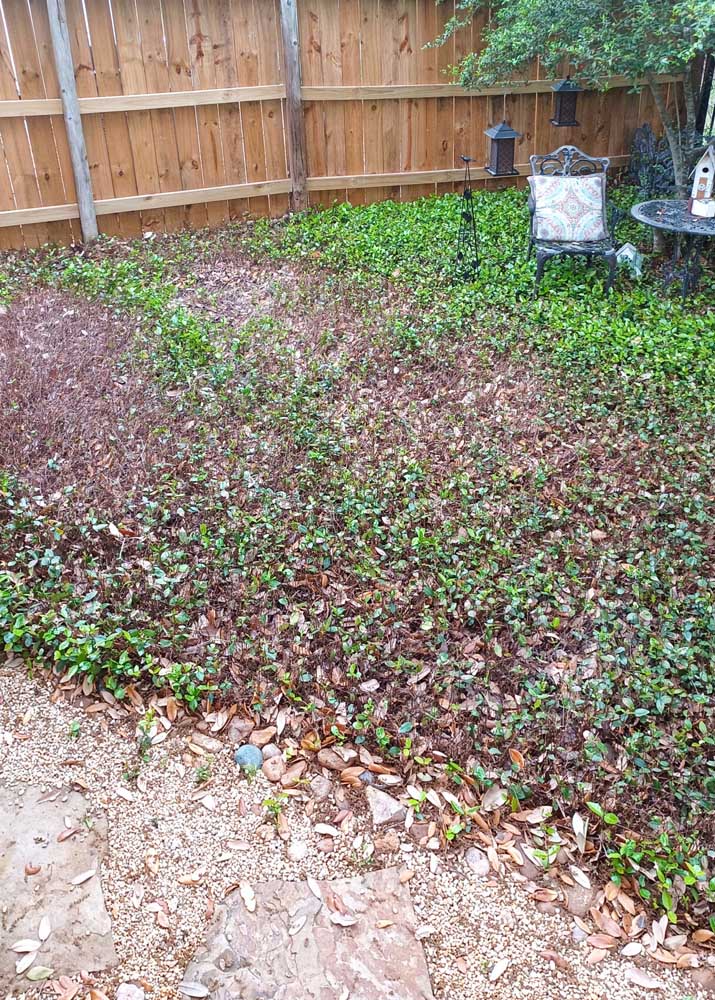Sperry: Bleeding hearts don’t thrive in Texas heat
Published 12:00 am Sunday, April 16, 2023

- Asian jasmine
Dear Neil: We planted bleeding hearts (Dicentra spectabilis) that we bought online back in February. They have done fairly well through March. We even had a couple of blooms, but I noticed recently that the leaves on both plants are yellowing and browning at their tips. They are planted in shade with some sun in the afternoon. We water every afternoon. I see no signs of pests. What could it be?
Answer: Bleeding hearts do not thrive in most of Texas (too hot), and as I read your note before looking at your photo, I just chalked it up to our climate. (Although they’ve only had the “pleasure” of less than two months of Texas weather so far.) The photos make me worry that you might be keeping them soggy.
Trending
Dear Neil: I am moving to a new home and need advice on trees. I love oaks and their durability, but acorns and pollen are daunting to keep up with. Are there any trees that are low maintenance and of equal durability for a person 74 years of age? Are there any oaks that have fewer of the acorns and flowers?
Answer: All trees will have some kind of a messy time. It’s just the nature of having living beings around us. For most of Texas I list seven trees as being the best. You will probably be able to think of the down sides of each: live oak, Shumard red oak, Chinquapin oak and bur oak, also pecan, cedar elm and Chinese pistachio. Although they are slower growing, southern magnolias also belong in that same superior category. When I weigh the things that concern you, I’d still rank oaks at the top. I have all seven of those trees (and magnolias) on our rural property, and I’d say Chinquapin oak probably has the least issues of the batch. Its acorns are smaller, and I’ve not seen the volumes of pollen in the 30 years that I’ve been parking near ours. Shumard red oak would probably come in second. But those are just my random thoughts based on a few minutes to muse over a very interesting question.
Dear Neil: Most of my backyard space is taken up by our pool. I recently obtained two dogs and within two months they have beaten all the grass to a pulp. One landscaping company suggested St. Augustine, saying it would hold up to the wear of the dogs. Do you agree?
Answer: Definitely not. When you see a lawn wearing down from constant pedestrian traffic such as a mail person walking the same route day after day, the St. Augustine will go first because all its runners are on top of the ground. Bermuda is by far the more resilient grass because it also has rhizomes (runners beneath the soil surface). It will rebound where St. Augustine cannot. But you will have to give even new Bermuda a chance to become established.
Dear Neil: We have 17 live oaks on our 1/3-acre lot. When they shed their leaves in March, we have to have a full-sized flatbed trailer with a cover to haul all the leaves away. Twice recently (including this spring) the leaf drop has been minimal. We were able to mow and mulch the fallen leaves back into the soil. Why so few? Would it be because of the drought last summer?
Answer: It could be. And it also could have been because of the late December cold spell. It really took a toll on live oaks across big parts of the state. If the trees have leafed out well this spring, I wouldn’t worry about them.
Trending
Dear Neil: I needed privacy plants after the cold two years ago. I planted Japanese yews in one row and cherry laurels in another. Both groups are in full sun. The cherry laurels look great, but the Japanese yews are struggling. I didn’t want to spend a ton, but I also don’t want to waste a bunch of time waiting. Are the Japanese yews a mistake?
Answer: So many people switched over to hollies after the extreme cold of February 2021 because they survived better than any other plants around. Nellie R. Stevens hollies are great for tall screens (to 15-18 ft.) and Willowleaf hollies for intermediate heights (to 10-12 ft.). They quickly sold out two years ago, and they are becoming harder to find again this spring. People then started switching over to plants they really shouldn’t have been using, and that’s where Japanese yews have had their numbers called a few times too many. They require rather specific growing conditions: moist, highly organic planting soils, preferably neutral or slightly acidic. They do best in part shade, with protection from the hot afternoon sun, and they’re not nearly as winter-hardy as we would want in the northern half of the state. Cherry laurels, by comparison, do well as long as they’re not planted in alkaline soils where iron-deficiency will pull them down. They also are susceptible to the fatal cotton root fungus. If you plant more tall shrubs, hollies would be better over bigger parts of Texas.
Dear Neil: Our Asian jasmine is dying. We have an underground irrigation system. We have checked it and it seems to be functioning properly. Do you think the jasmine is diseased? Could it be lack of water? The upper area is still healthy and green.
Answer: This looks like leftover drought damage from last year, perhaps associated with cold injury from this past December. I have never seen (or heard of) any disease attacking Asian jasmine, so I doubt if that’s an issue.






